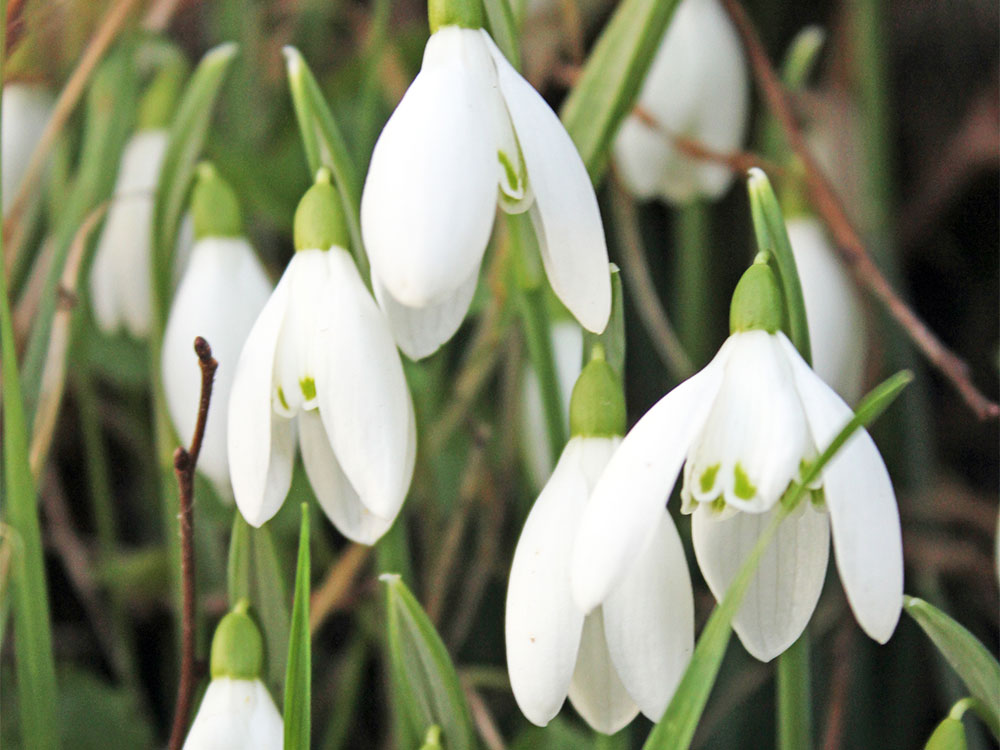Mid-February. It’s 6.30pm and there is still some brightness in the sky, the light in the northern hemisphere is returning, and the days are getting steadily longer. Although the bitter wind would suggest otherwise, the spring equinox is only five weeks away, daffodils are bursting through the cold winter soil and the bright hazel catkins are releasing their golden pollen. I find it so comforting that in this era of climate uncertainty and biodiversity loss that nature’s clock is still managing to run on time. It gives me hope. As the logs on my fire begin to flicker, I watch the stars emerge from an indigo sky. I have had a wonderful day.
For me, February is the borderland between winter and springtime, and as Patience Strong once wrote, it is a month where there is still “everything to hope for and nothing to regret”. In the language of flowers, it is the snowdrop that symbolizes this the most, and today, I have seen thousands of them carpeting my favourite woodland and bringing light and abundance to the once dark forest floor.
My earliest memories of snowdrops were forged when walking to primary school with my grandmother. The school lay at the edge of the small Hertfordshire village where I grew up, and to reach it, our route took us through the ancient graveyard. Whilst this was a scary place for an imaginative child, it was an undisturbed haven for these delicate bulbs. They would bring such delight to my grandmother; her rather sad face would burst into a smile and her eyes glisten with joy at the sight of the small delicate flowers that had found the strength and tenacity to breach the icy ground.
Now whenever I am amongst these perfect white flowers and harbingers of spring, I remember her, and our walks to school, the conversations we had and the love between us that has lasted a lifetime.
Although our common snowdrops (Galanthus nivalis) are native to Europe and the Middle East, it is unclear when they were brought to our shores, perhaps by the Romans or the plant collectors of the 16th century. But they have since naturalised and become embedded in our art and folklore. As I stoke the fire and settle for the evening, I am glad to have spent time with one of my most favourite flowers and the fond memories that they stirred.
By Dr Susie Curtin
curtin.susanna@gmail.com











Leave a Reply